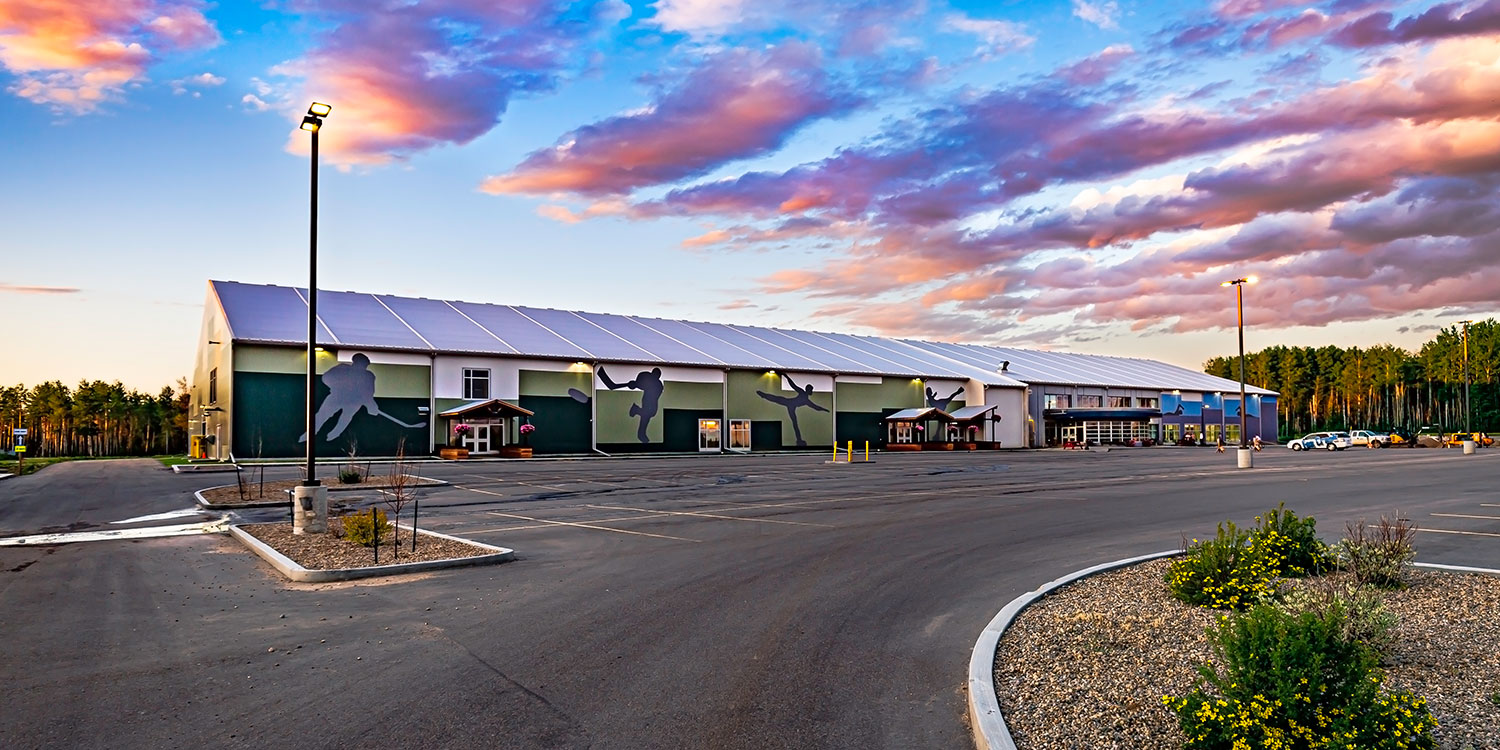Inside Legacy's Plan to Disrupt the Fabric Structure Industry

From steel to fabric to paint, Legacy spent its first 10 years in business changing the way fabric structures should be designed, manufactured and constructed. We had to. We knew what we wanted to see in the world of fabric buildings, and we didn’t see it.
We knew we wanted to see structures built on proven engineering. We thought that, with the quality of industrial fabrics always improving, fabric structures could last decades. We knew we could create a durable, quality building that would be equal to, or better than, existing traditional structures built of steel or wood or bricks. And finally, we knew we would need to make a lot of changes to the “way things are done.”
Once we set out on that path, there was nothing else to do except get to work. After all, it’s all just blueprints and words until someone builds something.
Step One-Customize
Choosing to customize every building had hidden payoffs for Legacy and for our customers. Obviously, customers got structures that precisely met their needs, both now and into the future. Often, we can fit a building in a limited space where other companies just can’t make it work. An upcoming case study on a fieldhouse for Stony Brook University is a great example of that. Their campus only had one spot for the structure they wanted, and we tailored a building for that precise footprint.
Starting each building from scratch also gave us the opportunity to learn and adapt and improve. Each design incorporated what our design and engineering team had learned from the previous structure. For you, the customer, the plans you sign today are the result of a decade of learning.
Many fabric structure companies primarily design a few structures and then manufacture off-the-rack buildings of preset sizes and configurations. To us, that’s no way to learn.
Step Two—Materials
Building fabric structures with solid steel, tapered I-beams was a significant change when we introduced it.
The advantages of working with solid steel beams are many, but here’s how this advancement changed the fabric building playing field:
- Solid steel creating a durable building that could be engineered to stand up to all manner of wind, snow and seismic activity
- Steel beams gave us engineering certainty about our structures (and engineers love certainty, just ask them).
- Our steel frames completely support the structure; the fabric cladding does not play any role in supporting the building. The steel does all the work.
We moved away from the industry-standard polyethylene (PE) fabric when we started learning about PVC-based cladding. The proprietary fabric we use, Exxotec™, is more resistant to sun over the long run and much stronger than PE. It was so tough that we could offer a 25-year warranty for our 28 ounce fabric cladding. It’s so tough we can install our structures in Florida,the Andes Mountains and northern Alberta. We recently installed a hangar in Guam, using Exxotec™, designed to stand up to 195 mph winds.
Our third industry-changing material is epoxy. Legacy creates a lot of buildings every year for businesses who store corrosive chemicals such as salt, mining concentrates and fertilizer. Protecting the steel on their buildings is very important to these customers, so we have developed a suite of epoxy coatings to seal our frames against rust. The industry still uses hot-dipped galvanizing, and Legacy provides that as an option too, but our EpoxxiShield™ coatings have become the industry leader for corrosion protection. In 2019, we invested in the development of our own paint shop where we surface prep by blasting the steel clean prior to applying epoxy coatings.
Step Three--Installation
Another thing that makes Legacy different is that we almost always use our own crews to install our buildings. There are certainly benefits to having our own people do the construction (industry experts, work ethic, loyalty, safety protocols, experience, familiarity with the materials, etc.), but there’s more to it than that.
Legacy uses a proprietary method for installing our fabric cladding panels. The way we tension our panels uses the physical properties of the Exxotec™ to create a tight, crisp surface that repels dirt and looks great. But it goes beyond looks: correctly tensioning our fabric reduces movement on the panel frame when the wind picks up, and that reduces friction against the frames. That, of course, adds to the longevity of the cladding and the building because it reduces wear.
Correctly tensioning the fabric has another benefit. With many fabric structures, customers need to have their buildings retensioned from time to time over the years. Legacy’s buildings do not need to be retensioned. Period. End of sentence.
Now you know why we use our own crews.
Final Step (step back and look at your building)
When you add all of these innovations together, they are more than the sum of their parts. These parts created a new standard in tension fabric structures, and our buildings are unique in the industry. Did we change the industry? Definitively, yes. Are our competitors catching up? Not sure. We are busy looking ahead.
“The reason the windshield is so large and the rearview mirror is so small is because what's happened in your past is not near as important as what's in your future.”
--Joel Osteen
Subscribe to our Blog
Recent Posts
- 5 Factors Every Project Owner Should Consider Before Approving Building Materials
- The 20-Year View: How Material Choices Impact Long-Term Operational Costs
- Climate Resilience in Commercial Construction: Why Traditional Methods May Not Be Enough
- Speed and Quality: The Role of Hybrid Building Materials
- Beyond the Bleachers: Designing Visually Striking Sports Facilities
